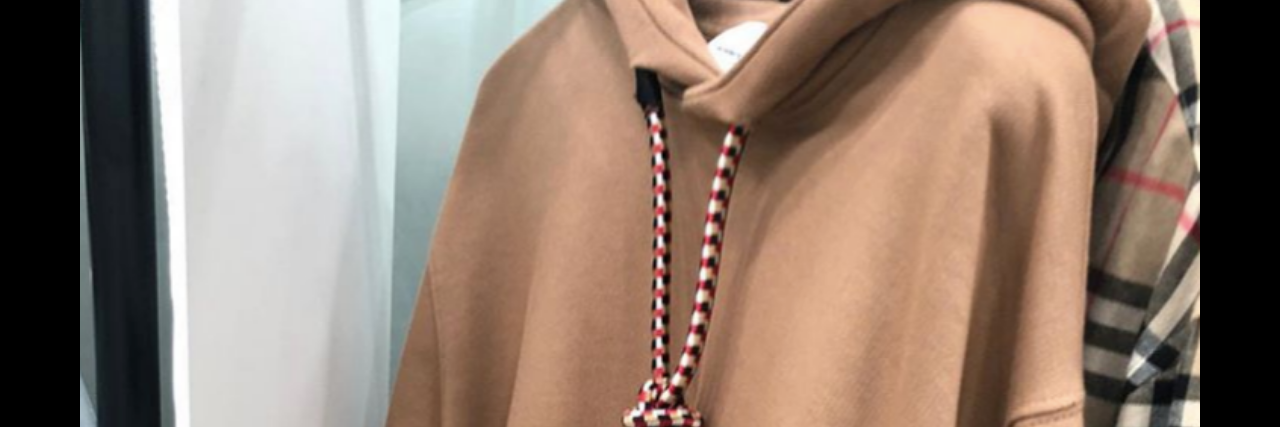What Stories About the Burberry Hoodie's 'Suicide Imagery' Missed
Editor's Note
This piece discusses suicide and racial trauma. If you need support, you can contact the Crisis Text Line by texting “START” to 741741.
I’m really disappointed in the media coverage of this whole Burberry situation. For those of you who don’t know: a model walked down the runway in a hoodie with a noose tied around it. The fashion brand debuted the design during London Fashion Week, but after the backlash, the item was pulled and an apology was issued.
What disappointed me the most was that much of the media coverage about the hoodie focused on suicide. This really puzzled and actually upset me.
As a black woman in America, the first thing I thought when I saw that rope tied like a noose was the history of lynchings in America and the symbolism of Trayvon Martin, a teen who was shot and killed in 2012 by George Zimmerman while walking home wearing a hoodie in the dark. So many black men wearing hoodies have been racially profiled in this country.
So no, the noose and the hoodie didn’t make me think of suicide first. It made me think of traumatic, wrongful, black death and racism. It made me anxious and furious to have to, once again, think about how many black people have died from nooses, or while simply wearing a hoodie while black in this country.
Racial mental health trauma is real. I remember when I first created The Safe Place, a mental health app for the black community, many white people called me “racist.” They wondered how in the world mental health issues for black people could be different than their own. This story here is a great example of how black people and other people of color are left out of conversations about mental health issues that directly affect our well-being.
Stories like this, and other racially charged stories about police brutality and colorisim, are examples of issues that affect the black community’s mental health, and I’m tired of this being ignored. If we are going to have a better mental health care system, we need not only more mental health resources for us all, but also more minority-based resources. If you’re a mental health professional, or even someone who advocates for mental health, it’s extremely important to be aware of racially-based mental health trauma.
Historically, mental health trauma can be passed down from generation to generation, and in my community that trauma has not been completely dealt with. People like to say that slavery and the civil rights movement happened so long ago, but there are literally black people still living who grew up in the Jim Crow-era and remember the horrors of lynchings. Pictures of black people hanged from nooses in trees can still be found online.
I remember last year when I gave a presentation at The NAMI National conference about mental health issues in the black community, during the Q&A portion after my presentation, an older black woman who grew up during segregation bravely said she still has anxiety issues about it to this day. A white man threatened to kill her mother, and she experienced mental anguish wondering whether the Klan was going to come and murder her mother. The effects of lynching and Jim Crow are not as distant as people think.
As a matter of fact, the Senate cleared legislation to make lynching a federal crime just this year. We are in 2019 and lynching just now became a federal crime after generations and generations of wrongful black death.
When I see a picture of the noose on Burberry’s hoodie, I get anxious thinking about how many black lives were lost because of it. When media sites are covering this story, we can’t forget to tell the whole truth about the serious mental health trauma the black community faces. We should not be ignored, and I will continue to see that we are heard and visible when situations like this occur.

